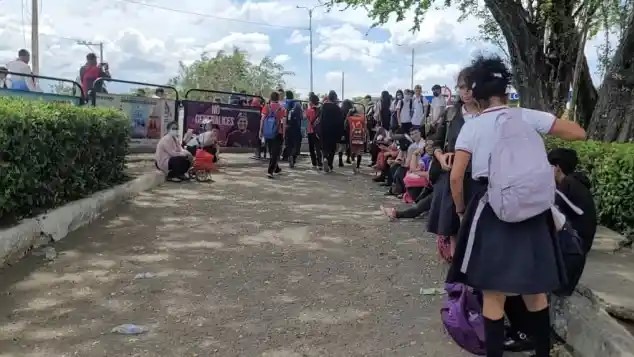
“Mommy, my head hurts a lot, I can’t take it anymore!” were the words of a 6-year-old Venezuelan girl, who looked dehydrated 15 minutes before noon, after crossing the Simón Bolívar international bridge with ambient temperature of 38 degrees Celsius, to reach the vicinity of the headquarters of Migration Colombia , where she was to wait for the bus that daily transports schoolchildren who reside in Venezuela, but go to school in neighboring Colombia.
By La Patilla – Luz Dary Depablos
Sep 28, 2022
The first grade student’s scalp was reddened by the sun and high temperature. There are thousands of children and adolescents who daily have to walk more than half a kilometer “under an inclement sun,” said Adriana Martínez, supervisor of school transportation at the Simón Bolívar international bridge.
Ms. Martínez emphasized that “there are really many risks here, they are children from preschool to 11th grade, and because it is a border area, all kinds of people move across, both for better and for worse. They (the students) are exposed not only to the inclement sun, but also to clashes (between irregular groups near the bridge).”
The reestablishment of commercial relations between Venezuela and Colombia, keeps the parents, representatives and operators of school transport, expectant and waiting for a pronouncement by the authorities of both countries, since the buses have as a stop a parking lot, one of the parking lots of the National Border Attention Center (Cenaf) and the National Tax and Customs Directorate (Dian). This parking lot will probably be reopened in the coming days for its intended purpose as it is a loading area, so the students would be left without a safe space to board school units.
Given this situation, parents and representatives hope that as part of the gradual reopening of this border, that the 38 school units that daily transport more than 4,430 children who reside in Venezuelan border municipalities and study in Colombian schools are permitted to cross over the border to pick up the children.
Cristina Herrera, mother of two children who reside in San Antonio (Táchira) and study in Villa del Rosario (Norte de Santander), asks that this buses be allowed to enter Venezuela, to avoid continuing to expose thousands of children to the dangers that are registered in the binational crossings.
“I have had problems with the “carrucheros” (people who carry suitcases in wheelbarrows and dollies), because they run by, they do not watch out for the children and run them over, and some children cross the bridge alone. Several children have already been beaten and run over by porters,” said Herrera.
Likewise, Alexandra Parra, grandmother of one of the students who commutes daily, asked that “let’s hope that they will once again allow the buses to stop there in the Plaza de las Banderas,” located near the San Antonio del Táchira Customs Office building.
The poor state of schools and high schools, in addition to the terrible state of public services in the border municipalities of Táchira, has generated a significant number of school dropouts in these schools, and that’s why thousands of parents and representatives of Venezuelan, Colombian or with dual nationality who reside on the Venezuelan border, are forced to take their children to study in Colombian territory.
…
Read More: La Patilla – More than 4,000 children cross the border daily “under an inclement sun” to study in Colombia
…

